Plant Stem Cell Market Size
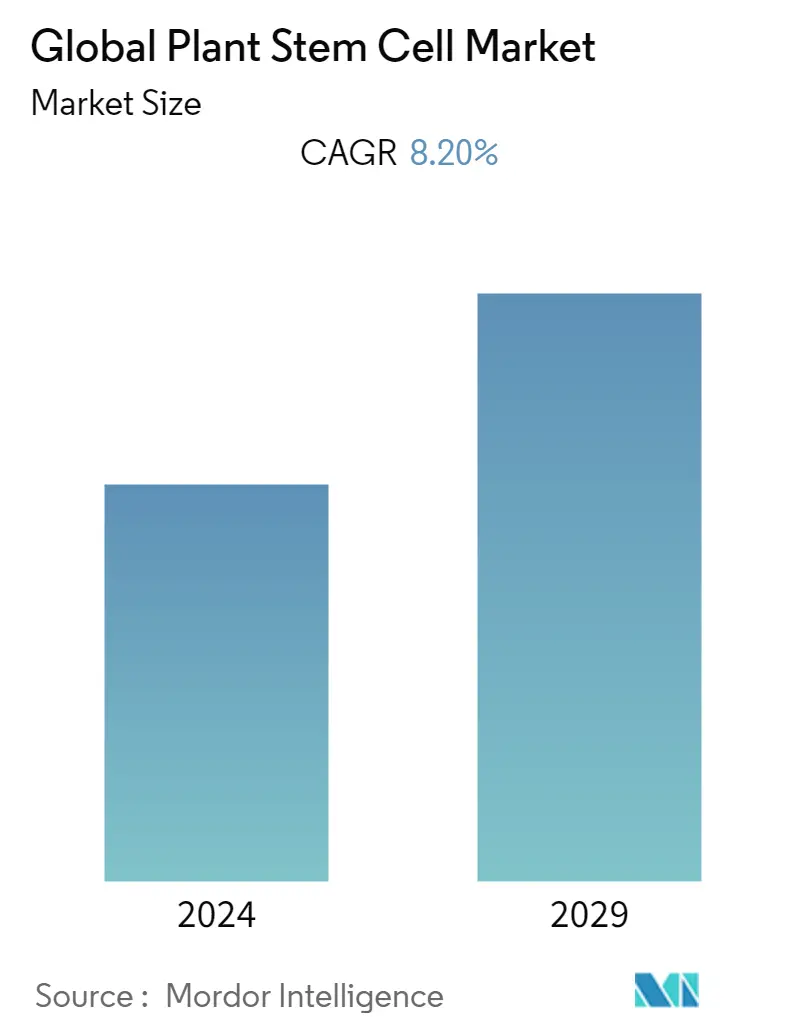
| Study Period | 2019 - 2029 |
| Base Year For Estimation | 2023 |
| CAGR | 8.20 % |
| Fastest Growing Market | North America |
| Largest Market | Asia-Pacific |
| Market Concentration | Medium |
Major Players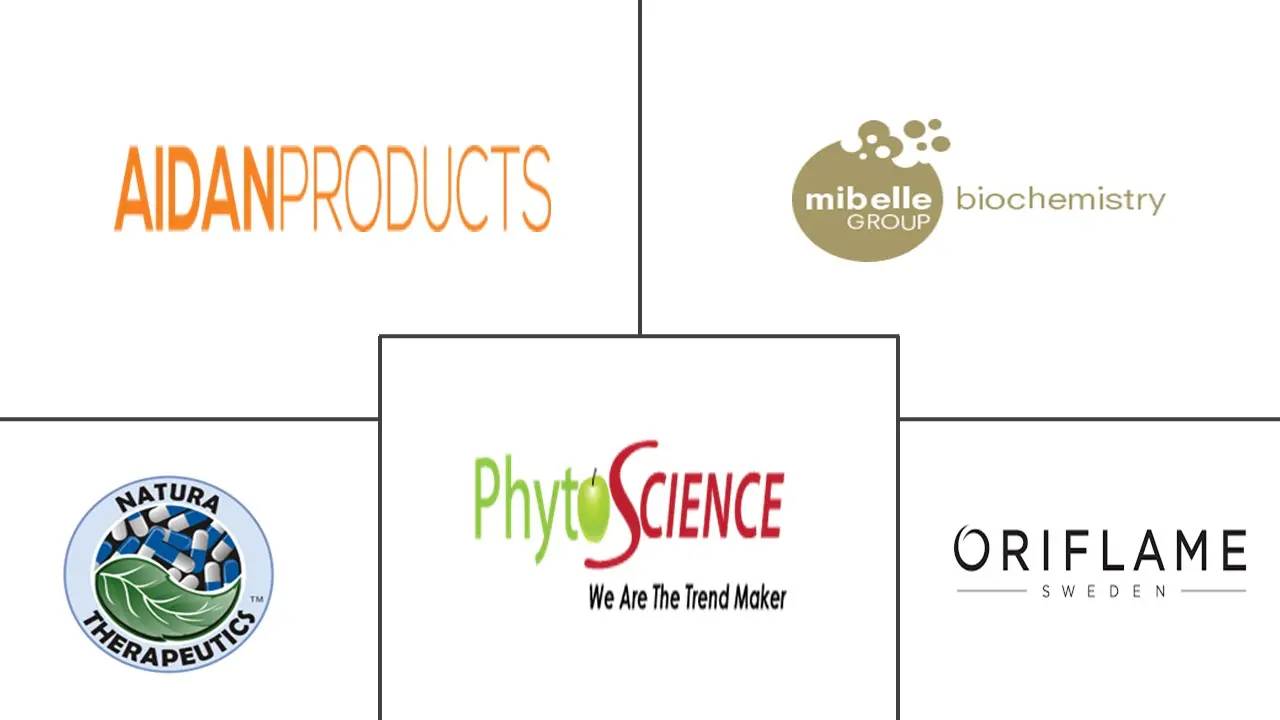
*Disclaimer: Major Players sorted in no particular order |
Plant Stem Cell Market Analysis
The plant stem cell market is expected to grow at the registered CAGR of 8.2% during the forecast period, 2022-2027.
Since the emergence of COVID-19, there has been an increase in demand for nutritional products, as proper nutrition is required for proper immunity. The demand for cosmetics has increased among both men and women, which is expected to propel the plant stem cell market forward. According to the study titled "Natural Plant Products: A Less Focused Aspect for the COVID-19 Viral Outbreak," published in Plant Biotechnology in October 2021, despite prior good reports of plant-based treatments, there have been no successful clinical studies of Phyto-anti-COVID therapies to yet. Thus, hampering the market growth in COVID-19. Moreover, according to the study titled "Use of medicinal plants for COVID-19 prevention and respiratory symptom treatment during the pandemic in Cusco, Peru: A cross-sectional survey" published in the PLOS Journal in September 2021, found that mesenchymal stem cells (MSCs) and their exosomes (MSCs-Exo) can considerably reduce the risk of lung damage caused by alveolar inflammation and related pathological states, such as the one seen in COVID-19 patients.
The cosmetic industry has increased its demand for plant stem cells due to the numerous benefits they provide, such as whitening, tanning, moisturizing, washings, and skin rejuvenation. According to the study titled "Stem cells and the pursuit of youth, a tale of limitless possibilities and commercial fraud," published in the World Journal of Biological Chemistry in July 2021, online direct-to-consumer marketing of stem cell therapies in Japan, 83 % of websites in the Japanese online stem cell market promoted cosmetic procedures, compared to only 14% in the United States. Also, companies in the cosmetic industry are investing more in the research and development of new stem cell products and applications due to increased demand. As a result, the global plant stem cell market is expected to grow as demand for anti-aging, hair care, and skincare products rises. Because male consumers are becoming more interested in cosmetics and aesthetics, the market is expected to grow shortly.
Furthermore, increased product launches containing plant stem cells for topical use helps to protect skin stem cells from aging, which aids in the growth of the plant stem cell market. In March 2020, Mibelle Biochemistry's launched the PhytoCellTec Malus Domestica Hair, a plant stem cell active ingredient targeted to human hair stem cells. The technology reportedly protects hair stem cells against premature aging and loss. Additionally, in April 2019, Tremotyx Biomedical Lab released an over-the-counter eczema treatment based on plant stem cells. This new aloe vera-based treatment will benefit millions of eczema sufferers in the United States.
However, the high operational costs associated with extracting and manufacturing plant stem cell products are expected to limit the plant stem cell market's growth.
Plant Stem Cell Market Trends
This section covers the major market trends shaping the Plant Stem Cell Market according to our research experts:
Cosmetic by Application Segment is Expected to Dominate the Market Over the Forecast Period
Extracts obtained from plant stem cells are currently used in the production of both regular consumer and professional cosmetics, such as arbutin obtained from Catharanthus roseus (rose periwinkle) and pigments such as safflower and saflorin obtained from Catharanthus roseus (rose periwinkle).
According to the study titled "Plant stem cells and their applications, with a focus on commercially available products," published in the 3 Biotech in July 2020, Anti-aging lotions with plant-based compounds made from Mirabilis jalapa and the Indian gooseberry fruit Phyllanthus Emblica are among the latest cosmetics trends. In addition, plant cell culture is used to create several peppermint-based haircare products. Many cosmetic companies claim that their products contain stem cell technology. Thus, the extensive properties of the stem in the various cosmetics, as well as the technology adopted by the key players, are anticipated to boost the segment over the forecast period.
Furthermore, cosmetic product launches which are made up of plant stem cells are expected to boost the market over the forecast period. For instance, in May 2020, Vytrus Biotech, the company that specialised in plant stem cell culture for the cosmetic sector, launched a new biological deodorant ingredient that efficiently reduces body odor, DEOBIOME NONI (made from Morinda citrifolia plant stem cells). It consists of the first deodorant treatment that allows the axilla to perspire while avoiding bad odor generation while respecting the skin microbiota and the ecosystem. Therefore, due to these factors mentioned above, the cosmetics segment is expected to grow and occupy a major share in the plant stem cell market over the forecast period.
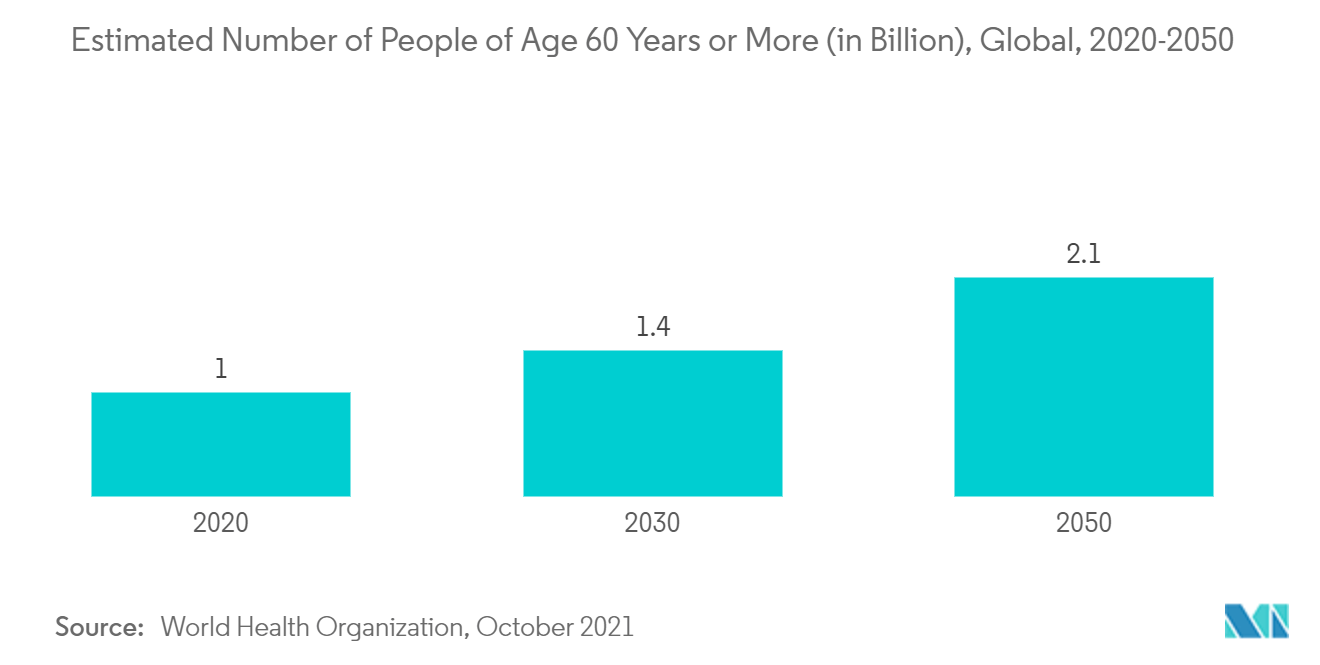
North America Dominates the Market and Expected to do Same in the Forecast Period.
North America dominates the plant stem cell market over the forecast period due to sophisticated technology that enables plant culture and component extraction research. In these developed nations, rising demand for naturally obtained products and more awareness also contribute to the growth of the plant stem cell market.
Rising the application of plant stem cells in various industries is anticipated to drive the market in the region. According to the study titled "Plant stem cell research is uncovering the secrets of longevity and persistent growth," published in The Plant Journal in September 2021, as a cosmetic product, stem cells have shown promise in reducing wrinkles in the crow's feet area of the face. Tomato cultivated stem cells from the plant Lycopersicon esculentum have shown promise in preventing heavy metal poisoning in the skin. Thus, the rising demand od plant stem cell in the cosmetics industry is anticipated to drive the market in the region.
The major market players are focusing on R&D activities to introduce new plant stem cell products in the market. However, to grow their product portfolio, major market players are focusing on various business tactics such as product launches. For instance, in March 2019, Mibelle Biochemistry introduced PhytoCellTec Goji, a new active component produced from goji plant stem cells. PhytoCellTec Goji improves exosome connection. Thus, all aforementioned factors are expected to boost the market over the forecast in the region.
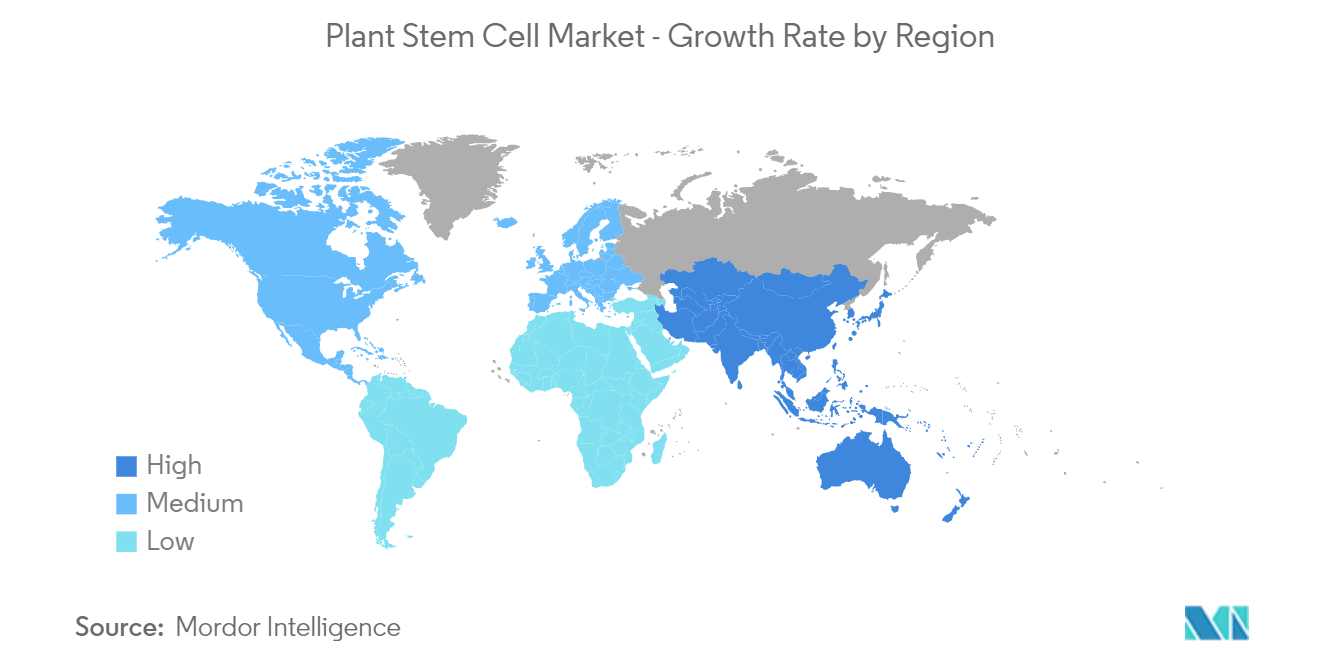
Plant Stem Cell Industry Overview
The plant stem cell market is moderately competitive and consists of several major players. In terms of market share, few of the major players currently dominate the market. The presence of major market players includes Oriflame Holding AG, MyChelleDermaceuticals LLC, Natura Therapeutics Inc., Aidan Products LLC, Mibelle Biochemistry, Phyto Science SDN BHD, and Renature Skin Care Inc.
Plant Stem Cell Market Leaders
-
Natura Therapeutics Inc
-
Aidan Products LLC
-
Mibelle Biochemistry
-
Phyto Science SDN BHD
-
Oriflame Holding AG
*Disclaimer: Major Players sorted in no particular order
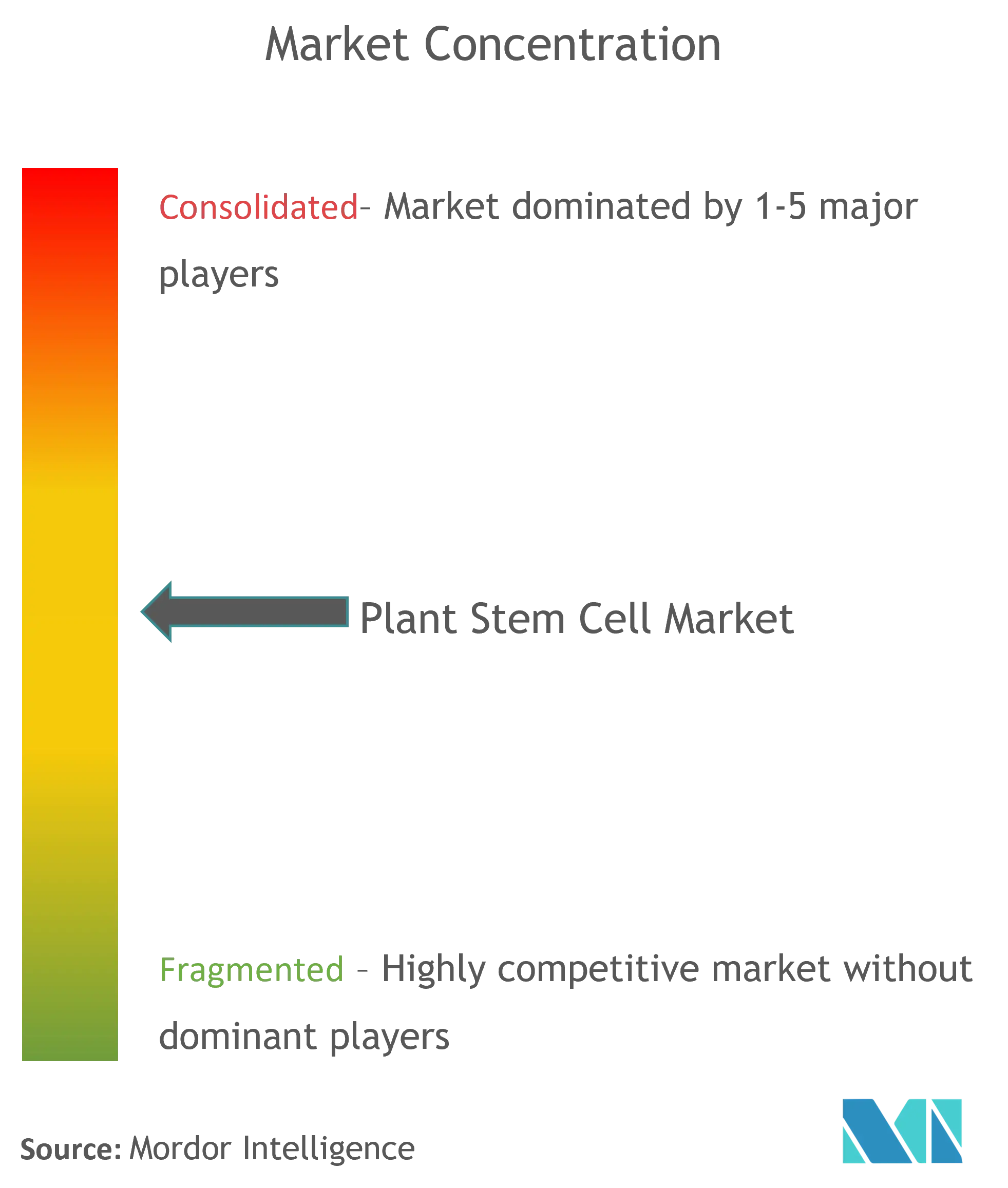
Plant Stem Cell Market News
- In April 2022, Frownies, a natural skincare company, released a new skin-renewing apple serum that uses plant-based stem cell technology. These stem cells have been found to offer numerous skin benefits, particularly around the eyes and lips. On the Frownies website, the newest skin serum is now available.
- In March 2022, Bayer, and NutriLeads, a natural health ingredients company, launched a new and innovative immune product called Daily Immunity featuring the award-winning ingredient, BeniCaros. Stem and Root Daily Immunity is substantiated by breakthrough clinical trials
Plant Stem Cell Market Report - Table of Contents
1. INTRODUCTION
- 1.1 Study Assumptions and Market Definition
- 1.2 Scope of the Study
2. RESEARCH METHODOLOGY
3. EXECUTIVE SUMMARY
4. MARKET DYNAMICS
- 4.1 Market Overview
-
4.2 Market Drivers
- 4.2.1 Rising Demand for Plant Stem Cells in the Cosmetic Industry
- 4.2.2 Increased Product Launches with Plant Stem Cells
-
4.3 Market Restraints
- 4.3.1 High Operational Cost with the Extracting and Manufacturing of Plant Stem Cell
-
4.4 Porter's Five Force Analysis
- 4.4.1 Threat of New Entrants
- 4.4.2 Bargaining Power of Buyers/Consumers
- 4.4.3 Bargaining Power of Suppliers
- 4.4.4 Threat of Substitute Products
- 4.4.5 Intensity of Competitive Rivalry
5. MARKET SEGMENTATION (Market Size by Value - USD million)
-
5.1 By Location
- 5.1.1 Root Apical Meristems
- 5.1.2 Shoot Apical Meristems
- 5.1.3 Vascular Meristems
-
5.2 By Application
- 5.2.1 Nutrition
- 5.2.2 Pharmaceutical
- 5.2.3 Cosmetics
-
5.3 Geography
- 5.3.1 North America
- 5.3.1.1 United States
- 5.3.1.2 Canada
- 5.3.1.3 Mexico
- 5.3.2 Europe
- 5.3.2.1 Germany
- 5.3.2.2 United Kingdom
- 5.3.2.3 France
- 5.3.2.4 Italy
- 5.3.2.5 Spain
- 5.3.2.6 Rest of Europe
- 5.3.3 Asia-Pacific
- 5.3.3.1 China
- 5.3.3.2 Japan
- 5.3.3.3 India
- 5.3.3.4 Australia
- 5.3.3.5 South Korea
- 5.3.3.6 Rest of Asia-Pacific
- 5.3.4 Middle East and Africa
- 5.3.4.1 GCC
- 5.3.4.2 South Africa
- 5.3.4.3 Rest of Middle East and Africa
- 5.3.5 South America
- 5.3.5.1 Brazil
- 5.3.5.2 Argentina
- 5.3.5.3 Rest of South America
6. COMPETITIVE LANDSCAPE
-
6.1 Company Profiles
- 6.1.1 Oriflame Holding AG
- 6.1.2 MyChelleDermaceuticals LLC
- 6.1.3 Natura Therapeutics Inc.
- 6.1.4 Aidan Products LLC
- 6.1.5 Mibelle Biochemistry
- 6.1.6 Phyto Science SDN BHD
- 6.1.7 Renature Skin Care Inc.
- *List Not Exhaustive
7. MARKET OPPORTUNITIES AND FUTURE TRENDS
** Subject To AvailablityPlant Stem Cell Industry Segmentation
Plant stem cells are undifferentiated cells found in plant meristems. Plant stem cells are the source of plant vitality because they maintain themselves and provide a constant supply of precursor cells for the formation of various tissues and organs. Plant stem cells have two distinct properties: the ability to differentiate into different cell types and the ability to self-renew so that the number of stem cells remains stable. Processed extracts from the buds, roots, and shoots are in high demand and widely used for topical applications in the plant stem cell market, which focuses on the ability of plant cells. The plant stem cell market is segmented by location (root apical meristems, shoot apical meristems, and vascular meristems), application (nutrition, pharmaceutical, and cosmetics), and geography (North America, Europe, Asia-Pacific, Middle East and Africa, and South America). The market report also covers the estimated market sizes and trends for 17 different countries across major regions globally. The report offers the value (in USD million) for the above segments.
| By Location | Root Apical Meristems | |
| Shoot Apical Meristems | ||
| Vascular Meristems | ||
| By Application | Nutrition | |
| Pharmaceutical | ||
| Cosmetics | ||
| Geography | North America | United States |
| Canada | ||
| Mexico | ||
| Geography | Europe | Germany |
| United Kingdom | ||
| France | ||
| Italy | ||
| Spain | ||
| Rest of Europe | ||
| Geography | Asia-Pacific | China |
| Japan | ||
| India | ||
| Australia | ||
| South Korea | ||
| Rest of Asia-Pacific | ||
| Geography | Middle East and Africa | GCC |
| South Africa | ||
| Rest of Middle East and Africa | ||
| Geography | South America | Brazil |
| Argentina | ||
| Rest of South America |
Plant Stem Cell Market Research FAQs
What is the current Global Plant Stem Cell Market size?
The Global Plant Stem Cell Market is projected to register a CAGR of 8.20% during the forecast period (2024-2029)
Who are the key players in Global Plant Stem Cell Market?
Natura Therapeutics Inc, Aidan Products LLC, Mibelle Biochemistry, Phyto Science SDN BHD and Oriflame Holding AG are the major companies operating in the Global Plant Stem Cell Market.
Which is the fastest growing region in Global Plant Stem Cell Market?
North America is estimated to grow at the highest CAGR over the forecast period (2024-2029).
Which region has the biggest share in Global Plant Stem Cell Market?
In 2024, the Asia-Pacific accounts for the largest market share in Global Plant Stem Cell Market.
What years does this Global Plant Stem Cell Market cover?
The report covers the Global Plant Stem Cell Market historical market size for years: 2019, 2020, 2021, 2022 and 2023. The report also forecasts the Global Plant Stem Cell Market size for years: 2024, 2025, 2026, 2027, 2028 and 2029.
Global Plant Stem Cell Industry Report
Statistics for the 2024 Global Plant Stem Cell market share, size and revenue growth rate, created by Mordor Intelligence™ Industry Reports. Global Plant Stem Cell analysis includes a market forecast outlook to 2029 and historical overview. Get a sample of this industry analysis as a free report PDF download.



